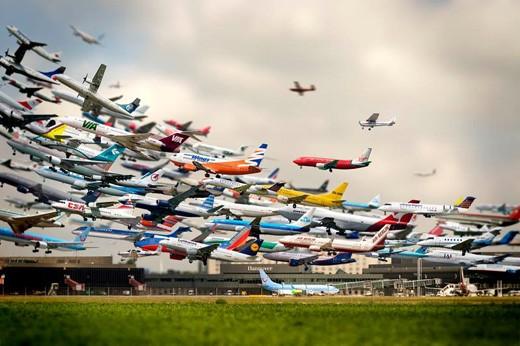Home » Technology »
UAM Visual Noise Pollution
What the Industry Must Consider Now

With some estimates predicting as many as a half million eVTOLs, hybrid VTOLs, and other urban air vehicles traversing the world’s metropolitan skyways within a decade, a challenge looms for UAM aircraft developers and would-be operators that none alone can overcome: visual noise pollution.
Airports have faced the issue of noise abatement from aircraft taking off and landing for nearly a century. Everyone, it seems, wants the convenience of an airport nearby but when it comes to having one in, or near, their neighborhood, the response has been NIMBY (Not in My Backyard).
As UAM is expected to be if not in, then above, people’s backyards, front yards, and their streets as air taxis ferry passengers from vertiports to homes or drones hover briefly while delivering packages from merchants or the postal service, what is the appropriate amount of UAM aircraft?
Four, No More: Managing the visual noise of urban air mobility
With most flying cars under development expected to be eVTOLs — electric, battery-powered — aural engine noise will be mitigated (although propellor noise may still be a problem during low altitude flight).
The larger issue will perhaps be visual noise. Dozens or more passenger, cargo, or delivery VTOLs overhead may create a visual blight once the bane of the outdoor advertising billboard industry.
“Humans can appreciate less than four moving objects in random fashion, but easily get confused with larger numbers,” explains Dr. Erik Blasch, a program officer with the U.S. Air Force Research Laboratory in Arlington, Virginia. And, he adds, “As lighting conditions and contrast decrease, it becomes more problematic.”
Data and Controls to Manage the Visual Noise of UAM
The visual “noise” can be measured by several sources, including automatic dependent surveillance-broadcast (ADS-B), ground-based sensors, and the members of the effected community.
Operating conditions, Dr. Blasch says, consist of the sensors, environment, and target (SET). If the airborne vehicles are above the clouds, they won’t contribute to visual noise. Below the clouds, the aircraft can be programmed to form a more visually pleasing pattern, such as in a swarm or V-formation.
Key to managing the visual noise of urban air mobility is unmanned air traffic management (UTM). Along with ADS-B mandates and air corridors, air traffic managers can increase or decrease aircraft density in the sky and coordinate the flow of traffic to be less troublesome to the communities they serve.
Regulators Getting Ready to Regulate
Contemplating the future of UAM, the U.S. Defense Advanced Research Projects Agency (DARPA) has experimented with coordinating distributed control using data from the ground and inter-vehicular detection and analysis. Several other agencies have also taken a role in planning for how UAM will integrate into our lives including the FAA’s NextGen, NASA’s Advanced Air Mobility (AAM), the European Union’s Single European Sky ATM Research (SESAR), and the International Civil Aviation Organization (ICAO).
Impending UAM visual distractions, Dr. Blasch says, also pose risks should UAM vehicles be allowed to fly over private property, streets used by first responders, and the airspace currently traversed by recreational and rotary aircraft. The noise pollution, visual and aural, caused by UAM will only exacerbate the tensions between residents whose property values could decline as air-delivery companies hope to profit.
Wildlife and the effects on the ecosystem must also be taken into account as UAM is integrated into communities. Much as wind farms can have adverse effects on flocking birds, multiple UAM aircraft have the potential to distract drivers with their lights which should encourage regulators to legislate cautiously. New drivers might be fascinated by the visual noise while older drivers might find it confusing.
The problem visual noise pollution potentially poses for our skies remains. With everyone’s thinking grounded in practicality and common purpose, solutions will certainly be found.
Want to continue to stay up-to-date about the latest developments in the eVTOL industry? Subscribe to AeroCar Journal now. It’s FREE (for a limited time)! Join us on Twitter for the latest news, analysis, and insight about the eVTOL industry. AeroCarJ


